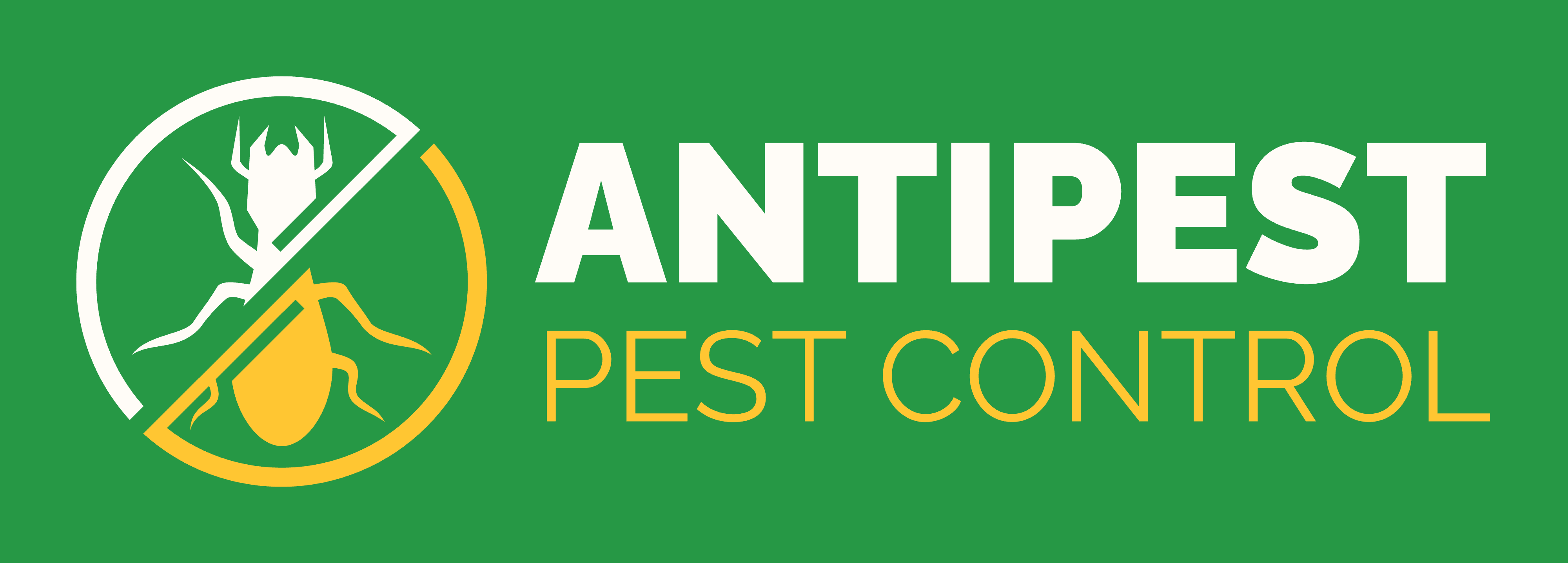How to protect wood from termites is one of the most crucial questions every homeowner should ask themselves. These tiny but destructive insects cause an estimated $5 billion in property damage annually in India alone, making termite prevention a critical aspect of home maintenance.
Understanding these pests and implementing effective protection strategies can save you thousands of dollars in repair costs and preserve the structural integrity of your home.
Table of Contents
What Are Termites?
Termites are small, cellulose-eating insects that live in large social colonies, similar to ants and bees. Often called “white ants,” termites are actually highly evolved cockroaches that consume a variety of decaying plant material, primarily wood, leaf litter, and soil humus. These detritophagous insects are distinguished by their moniliform antennae and soft-bodied, unpigmented worker caste.
What makes termites particularly dangerous is their ability to consume wood unnoticed, making them a silent threat to wooden structures. A termite is defined as a small tropical insect that feeds on wood and lives in colonies, with about 2,997 extant species currently described worldwide. Their social system shows remarkable parallels with those of ants and bees, though it evolved independently.
Common Types of Termites Found in Houses
Understanding how to protect wood from termites requires knowing which types commonly infest homes. There are three primary categories of termites that pose threats to residential structures:
Subterranean Termites
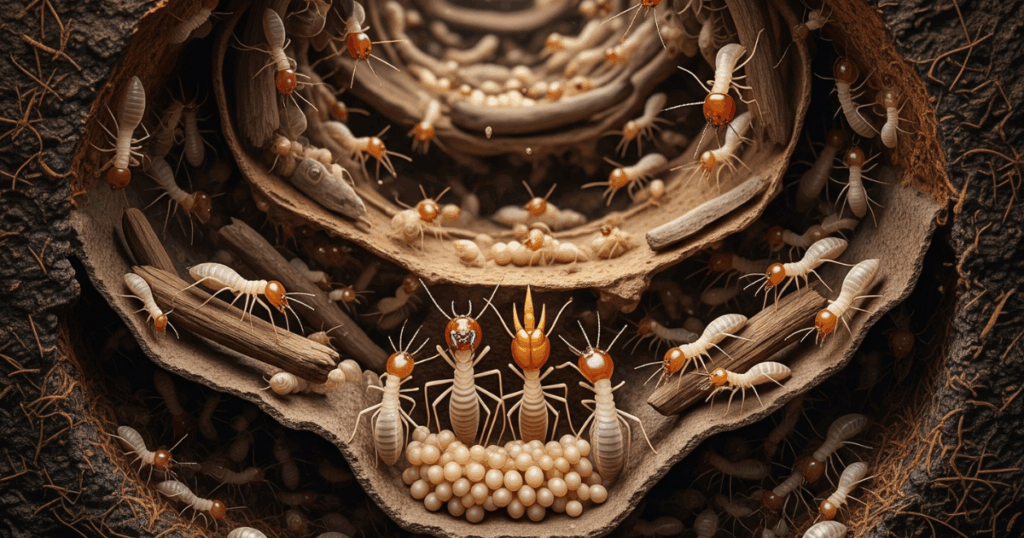
Subterranean termites are the most destructive type, living in underground colonies that can house thousands or millions of individual termites. These highly organized pests are light brown or yellowish in color with long, cylindrical bodies. They create distinctive mud tubes from the ground to reach wooden structures and leave behind sawdust and fecal pellets called frass.
Formosan Termites
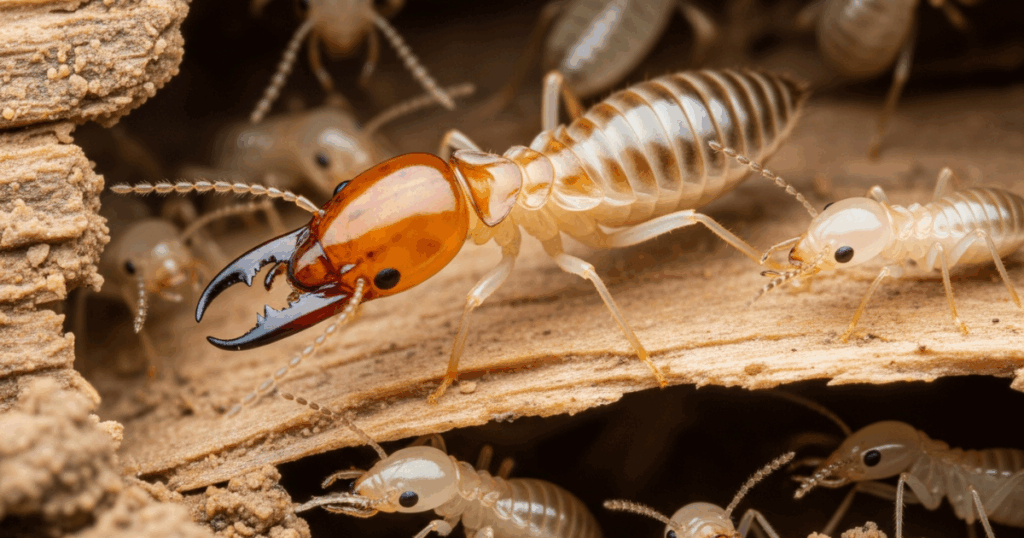
Originally from China, Formosan termites are nicknamed “super-termites” due to their particularly aggressive and destructive nature. These termites are creamy white to brown in color, about ½ inch in length, and are found in warmer climates including Hawaii, Florida, and California. They build intricate mud nests inside walls and are responsible for most termite damage in the United States.
Drywood Termites
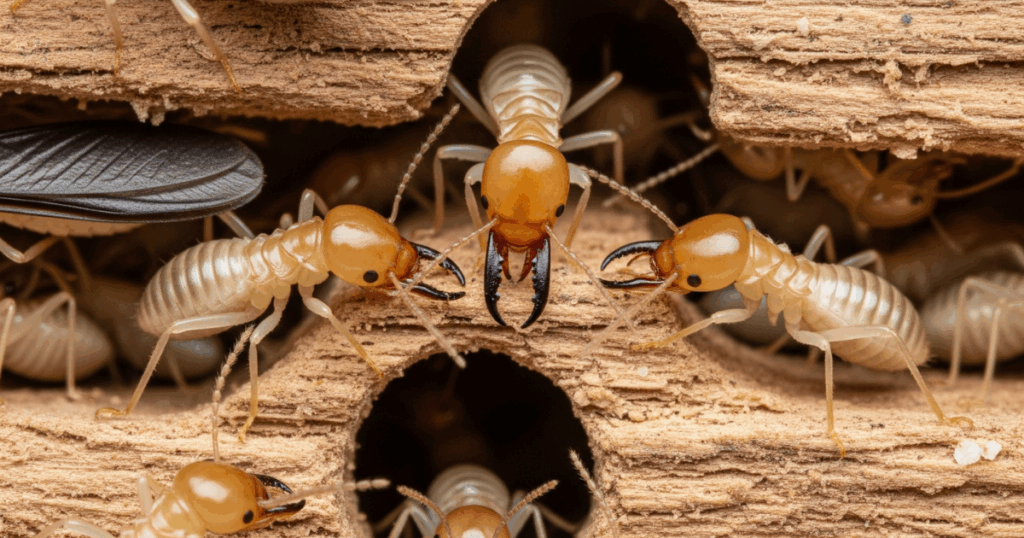
Unlike subterranean species, drywood termites don’t require soil contact and infest dry wood directly. They’re smaller than subterranean termites, measuring about ¼ to ⅜ inch in length, with long, narrow bodies that are typically pale or light brown. These termites often establish nests in roof materials and wooden wall supports.
Dampwood Termites
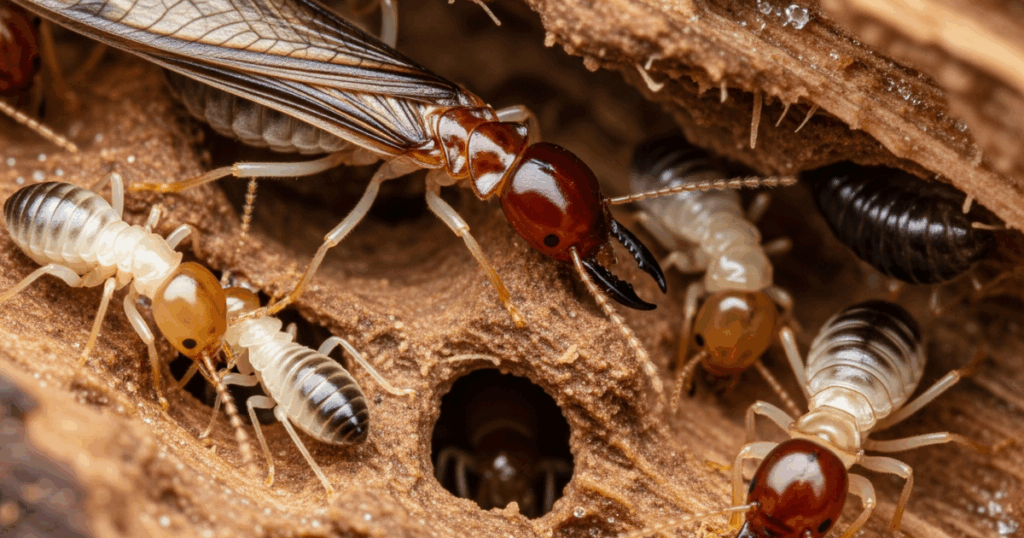
As their name suggests, dampwood termites infest wood with high moisture content and are normally larger than other species. They’re found in Pacific coastal states, the desert southwest, and southern Florida, though they don’t usually infest structures due to low moisture content in building materials.
7 Steps to Prevent Termite Attack
Learning how to protect wood from termites involves implementing comprehensive prevention strategies. Here are seven essential steps:
1. Control Moisture Around Your Home
Termites are attracted to moisture, so controlling dampness is crucial for prevention. Ensure proper drainage from air conditioning units and fix any leaks promptly. Install proper drainage solutions around buildings to prevent excessive moisture buildup near foundations. Keep areas around your home well-ventilated and dry, as moisture-retaining soil near foundations creates an inviting habitat for termites.
2. Maintain Distance Between Soil and Wood
Create a physical barrier by maintaining an 18-inch gap between soil and wooden structures using gravel beds. This prevents direct soil-to-wood contact, which is essential since termites typically emerge from underground nests to reach wooden materials. Raise wooden elements above ground level using concrete or metal supports to create a strong barrier.
3. Remove Food Sources
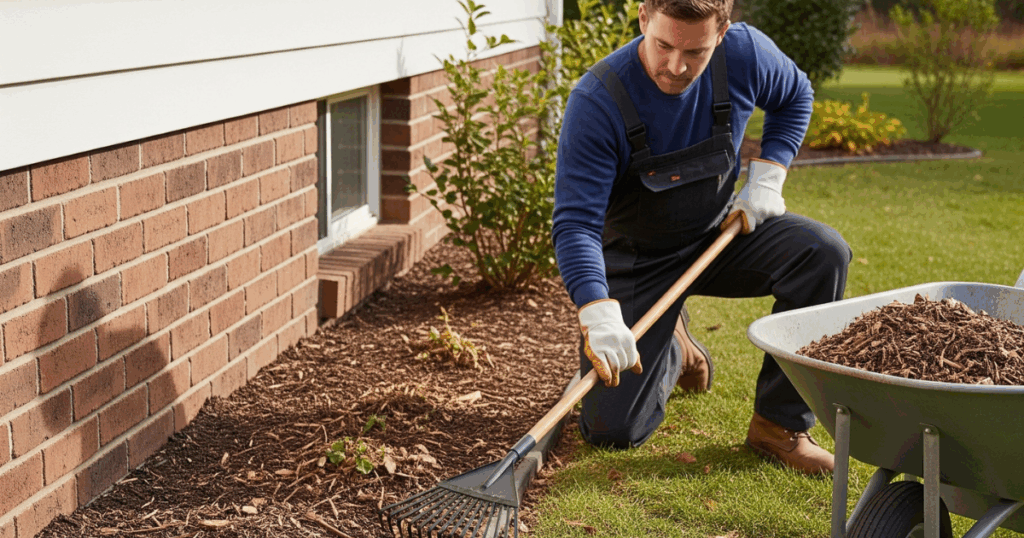
Eliminate potential termite food sources around your property. Keep dead trees, rotting wood, tree stumps, and leftover construction materials away from your home. Store firewood, mulch, and organic debris at least 20 feet away from your house. Avoid storing newspapers, cardboard boxes, or paper products for extended periods, and recycle them properly in sealed containers.
4. Seal Entry Points
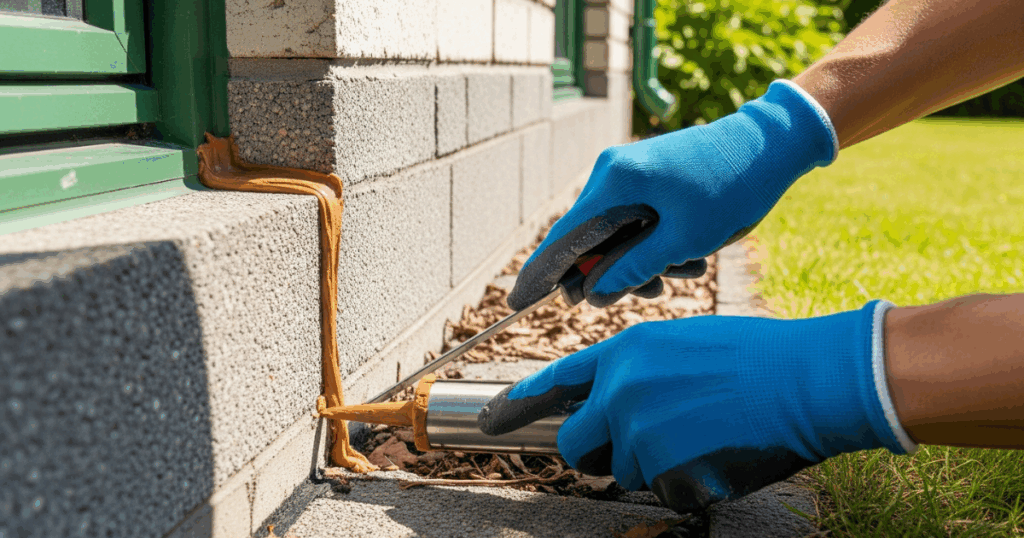
Termites can slip through spaces as tiny as 1/32nd of an inch. Seal cracks around water and gas lines, using stainless steel mesh for larger gaps. Patch foundation cracks with cement or concrete patching compound. Use caulk or sealant to close off potential entry points throughout your home.
5. Use Termite-Resistant Materials
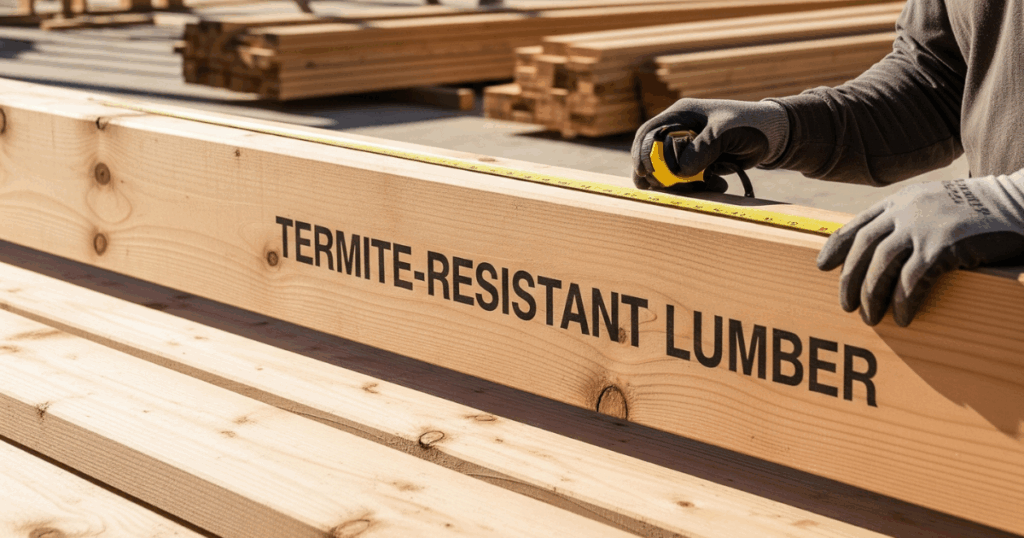
Choose pressure-treated lumber for construction and outdoor projects, as these materials undergo chemical treatment that repels termites. Apply borate-based wood preservatives for extra protection, ensuring regular reapplication for continued effectiveness. Replace damaged or rotting wood with termite-resistant materials like steel framing or pressure-treated wood.
6. Install Bait Systems
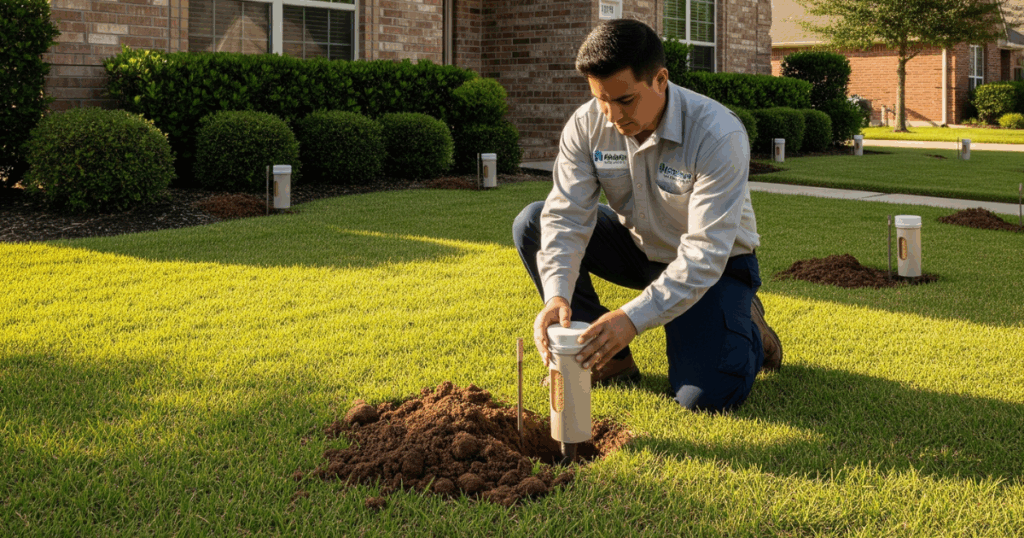
Implement termite bait systems around your property’s perimeter. These stations contain slow-acting poison that termites carry back to their colonies, eventually eliminating entire populations. Bait systems offer continuous protection and are highly effective as preventative measures.
7. Conduct Regular Inspections
Perform regular inspections of your home’s foundation, especially during spring and fall when termites are most active. Look for mud tubes, hollow-sounding wood, and other signs of termite activity. Use a flashlight to check crawlspaces and basements thoroughly. Early detection is crucial for effective termite management.
Learn how to get rid of wood eating insects and keep your furniture safe for years.
How to Protect Your Wooden Treasures from Termites?
Protecting valuable wooden furniture and treasures requires specific strategies beyond general home protection. How to protect wood from termites when it comes to precious wooden items involves several targeted approaches:
Apply Anti-Termite Treatments
Once wooden furniture is fabricated, apply anti-termite chemicals like wood preservatives to the surface. Allow the treatment to dry for at least 6-8 hours before finishing with veneer or laminate. Opt for herbal anti-termite chemicals that are odorless, ecologically friendly, and non-toxic.
Use Heat Treatment
Heat treatment is an effective, environmentally friendly method for protecting wooden treasures. Heat spaces to at least 120°F for 30 minutes to kill existing termites. This method is particularly useful for valuable antique furniture that cannot be treated with chemicals.
Create Protective Barriers
Apply foam-based non-repellent termite insecticides around problem areas. Use repellent termiticides on wooden structures like sheds and fences to create protective barriers. These treatments create lasting protection that termites cannot cross without being eliminated.
Proper Storage and Maintenance
Store wooden treasures in dry, well-ventilated areas away from moisture sources. Regularly inspect wooden items for early signs of termite activity, including small holes, sawdust, or hollow sounds when tapped. Keep wooden furniture elevated off the ground and away from exterior walls when possible.
When to Call Professionals?
Knowing when professional help is needed is crucial for effective termite management. How to protect wood from termites sometimes requires expert intervention, and recognizing these situations can save significant money and damage:
Early Warning Signs
Call a termite control specialist immediately upon noticing early signs of activity, such as mud tubes, hollow wood, or discarded wings. If you see visible structural damage like sagging floors, hollow-sounding wood, or mud tubes, professional intervention is necessary. These signs often indicate advanced infestations that DIY methods cannot effectively address.
Failed DIY Attempts
If you’ve tried DIY treatments but termites keep returning, it’s time to call professionals. Many DIY methods only eliminate surface workers without affecting the queen or satellite nests. Professional termite control specialists use targeted approaches like bait systems and soil treatments to disrupt entire colonies.
Species Identification
Different termite species require specific treatment approaches. Subterranean termites may need professional-grade barriers or liquid termiticides, while drywood termites might require fumigation or localized heat treatments unsuitable for DIY application. If you suspect high-risk termite species like Formosan termites, professional expertise is essential.
Large-Scale Infestations
Professional help is necessary for large-scale or multi-point infestations. If termites are active in multiple areas, professionals can implement integrated pest management strategies combining baits, barriers, and monitoring systems. They have specialized tools like moisture meters and infrared cameras to detect early signs that might be missed during visual inspections.
Peak Season Activity
Summer is peak termite activity season, making it an ideal time for professional inspections. When buying a home or conducting seasonal inspections, consider hiring professionals who can provide comprehensive assessments and preventive treatments on how to protect wood from termites.
Conclusion
Understanding how to protect wood from termites is essential for every homeowner committed to preserving their property’s value and structural integrity. The investment in prevention today will save you thousands in potential repair costs tomorrow, making how to protect wood from termites invaluable for every homeowner.
For comprehensive and hassle-free termite removal and long-term pest prevention, trust the professionals at Antipest Office. Visit us at the Antipest Office, Our trained technicians use safe and effective methods to protect your home and business. For service bookings and consultations, call us at +91 9819018398 .
How to Protect Wood from Termites? – FAQs
How to protect wood from termites naturally without using chemicals?
You can protect wood from termites naturally by maintaining proper moisture control and creating physical barriers with gravel beds.
What is the most effective method on how to protect wood from termites in furniture?
The most effective method to protect wood from termites in furniture is applying borate-based wood preservatives combined with proper storage.
How often should I inspect my home when learning how to protect wood from termites?
You should inspect your home at least twice yearly, preferably during spring and fall, to protect wood from termites.
Can moisture control alone teach me how to protect wood from termites completely?
While moisture control is essential, it’s not sufficient alone to protect wood from termites effectively.
When should I call professionals instead of DIY methods for how to protect wood from termites?
You should call professionals when you notice structural damage or failed DIY attempts to protect wood from termites.
What are the early signs that indicate I need to learn how to protect wood from termites?
Early signs include mud tubes, hollow-sounding wood, and discarded wings that show you need to protect wood from termites.
Which termite species makes it most challenging to protect wood from termites?
Formosan termites are the most challenging species, making it difficult to protect wood from termites due to their aggressive nature.
How to protect wood from termites in areas with high humidity?
In high humidity areas, focus on ventilation and dehumidification as primary methods to protect wood from termites.
What materials should I use when learning how to protect wood from termites during construction?
Use pressure-treated lumber and steel framing as primary materials to protect wood from termites during construction.
How long do treatments last when implementing how to protect wood from termites strategies?
Most professional treatments to protect wood from termites last 5-10 years depending on the method used.

